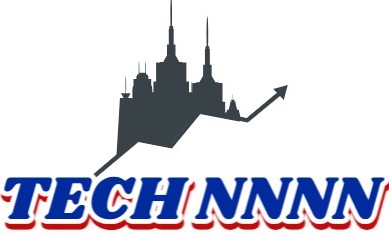Unlocking Cross-Functional Collaboration 3273843139

Cross-functional collaboration plays a pivotal role in driving innovation within organizations. By dismantling silos, teams can foster a culture of open communication and shared ideas. This approach not only enhances problem-solving capabilities but also invites diverse perspectives that enrich the creative process. However, the journey toward effective collaboration is not without challenges. Understanding these obstacles is crucial for unlocking the full potential of teams and achieving collective goals. What strategies can be employed to navigate this complex landscape?
Understanding the Importance of Cross-Functional Collaboration
Collaboration serves as the backbone of innovation within organizations, highlighting the critical role of cross-functional teamwork.
By fostering positive team dynamics, members unite around shared goals, enhancing creativity and problem-solving. This inclusive approach allows diverse perspectives to flourish, empowering teams to adapt and thrive.
In an environment that values freedom, cross-functional collaboration becomes essential in driving progress and achieving collective success.
Identifying and Overcoming Silos
Silos within organizations can significantly hinder progress and innovation, often creating barriers that limit communication and collaboration.
Effective silo identification is crucial for organizations seeking to enhance their collaborative spirit. By focusing on barrier removal, teams can foster a more inclusive environment, encouraging diverse perspectives and ideas.
This adaptive approach not only liberates potential but also cultivates a culture of shared purpose and freedom.
Building Trust and Open Communication
In fostering cross-functional collaboration, building trust and open communication emerges as a cornerstone for success.
Establishing transparent communication channels encourages team members to share insights freely, while promoting vulnerability and openness cultivates a supportive atmosphere.
These practices not only enhance relationships but also drive collective problem-solving and innovation.
Establishing Transparent Communication Channels
How can teams effectively foster an environment of trust and openness?
By implementing robust communication strategies and establishing transparent communication channels, teams can promote clarity and understanding.
Creating structured feedback loops allows for continuous improvement and adaptability, ensuring that all voices are heard.
This inclusive approach not only nurtures collaboration but also empowers individuals to engage freely in the collaborative process.
Encouraging Vulnerability and Openness
While fostering a culture of vulnerability and openness may seem daunting, it serves as a cornerstone for building trust within teams.
Embracing a vulnerability mindset allows individuals to share authentically, while an openness culture encourages diverse perspectives.
Key components include:
- Active listening
- Non-judgmental feedback
- Safe spaces for sharing
- Celebrating failures as learning opportunities
These practices strengthen collaboration and empower team members to thrive.
Encouraging Diverse Perspectives and Skill Sets
In fostering cross-functional collaboration, organizations can significantly benefit from embracing varied expertise and perspectives.
Encouraging open communication is pivotal in creating an environment where diverse skill sets can flourish, ultimately enhancing problem-solving and innovation.
Embracing Varied Expertise
Embracing varied expertise within teams fosters a rich tapestry of ideas and solutions, enhancing overall productivity and innovation.
This approach encourages:
- Expertise sharing to break down silos
- Skill integration for holistic problem-solving
- Collaborative learning that nurtures growth
- Diverse perspectives that challenge norms
Fostering Open Communication
To cultivate an environment where diverse perspectives and skill sets thrive, open communication must be prioritized within cross-functional teams.
Active listening fosters understanding, allowing individuals to express unique viewpoints freely. Constructive feedback enhances collaboration, promoting growth and innovation.
Building Trusting Relationships
Open communication lays the groundwork for building trusting relationships within cross-functional teams.
Emphasizing the importance of diverse perspectives and skill sets fosters an inclusive environment where collaboration thrives.
Effective relationship management can be achieved through:
- Engaging in trust building activities
- Encouraging open dialogue
- Valuing each member’s contribution
- Celebrating team successes
These practices enhance mutual respect and understanding, paving the way for innovative solutions.
Implementing Collaborative Tools and Technologies
Numerous organizations are increasingly recognizing the importance of implementing collaborative tools and technologies to enhance teamwork and communication across departments.
By adopting collaborative software, they facilitate seamless team integration, allowing for greater flexibility and creativity.
These tools empower individuals to share ideas freely, fostering an environment where diverse perspectives can flourish, ultimately driving innovation and improving overall organizational effectiveness.
Measuring Success and Continuous Improvement
How can organizations effectively measure the success of their cross-functional collaboration efforts?
Establishing clear success metrics and incorporating feedback loops fosters an environment of continuous improvement.
Organizations can enhance collaboration by focusing on:
- Team engagement levels
- Project delivery timelines
- Quality of outcomes
- Stakeholder satisfaction
These indicators empower teams to adapt and thrive, ultimately achieving greater freedom in their collaborative pursuits.
Conclusion
In the grand circus of corporate life, cross-functional collaboration often resembles a three-ring spectacle, where silos act as clowns juggling outdated ideas. Yet, when teams venture beyond their colorful confines, they discover a vibrant tapestry of perspectives, weaving innovation into the fabric of success. Trust becomes the tightrope, and collaborative tools the safety net, enabling daring feats of creativity. Ultimately, embracing this circus not only entertains but transforms the mundane into a masterpiece of collective achievement.




